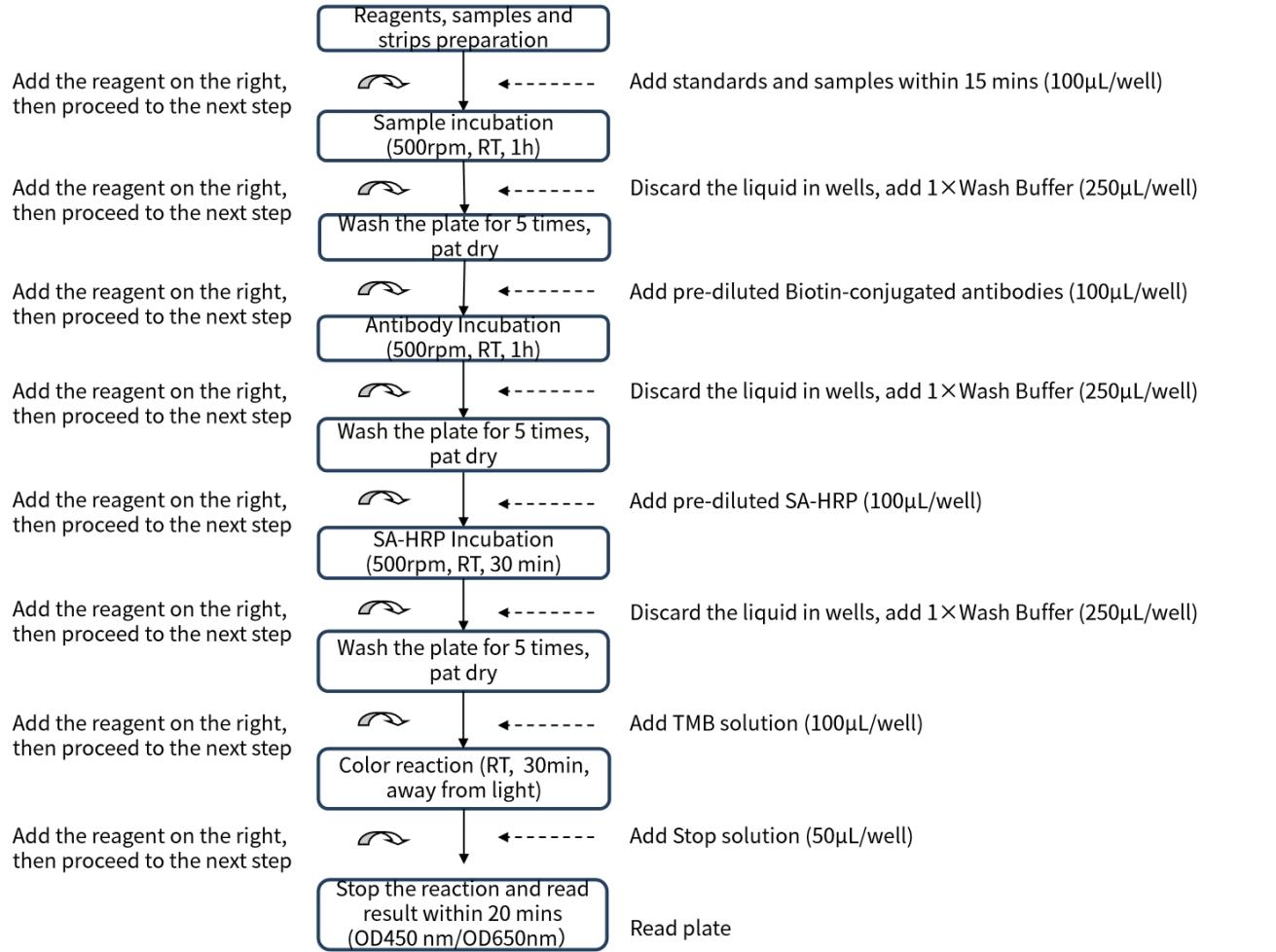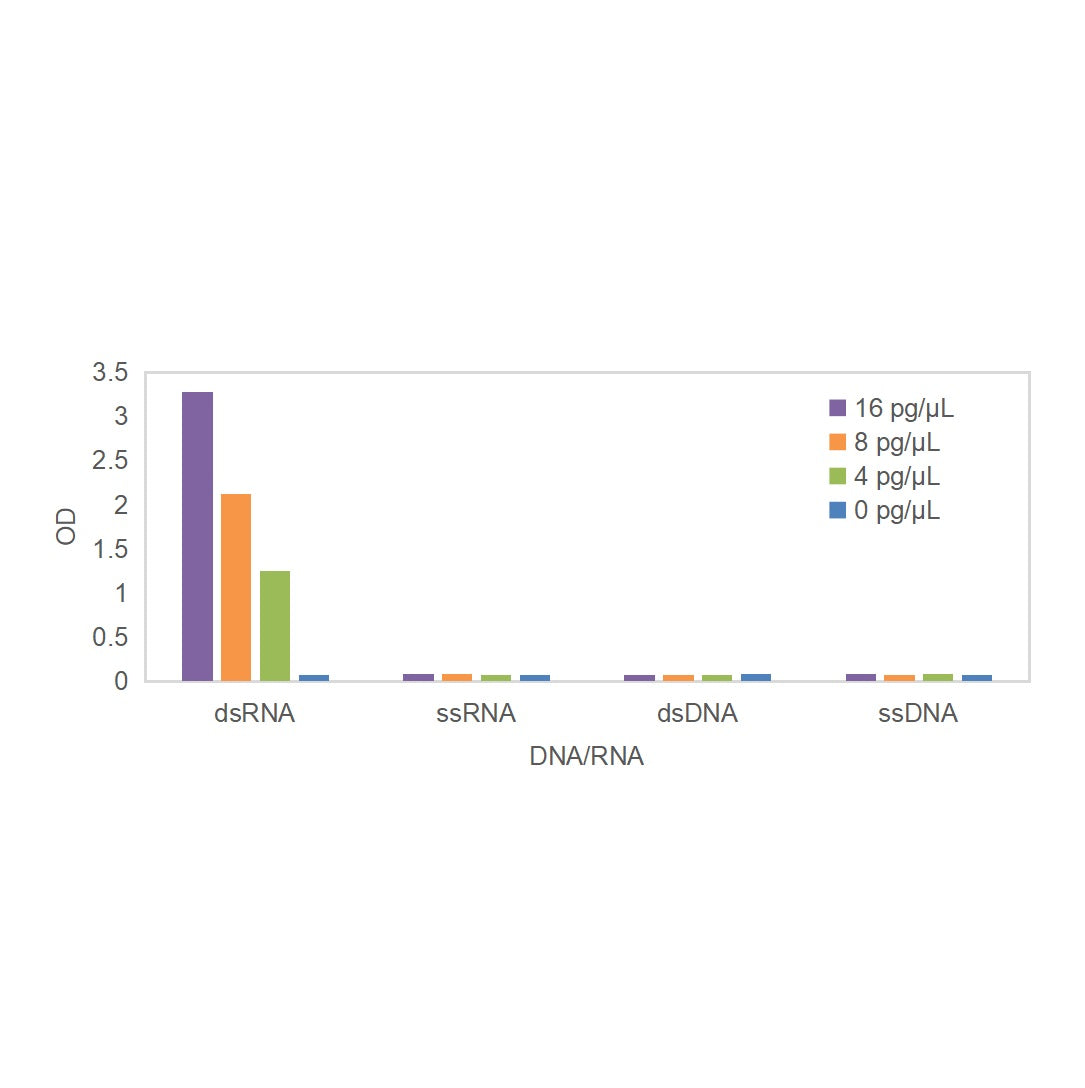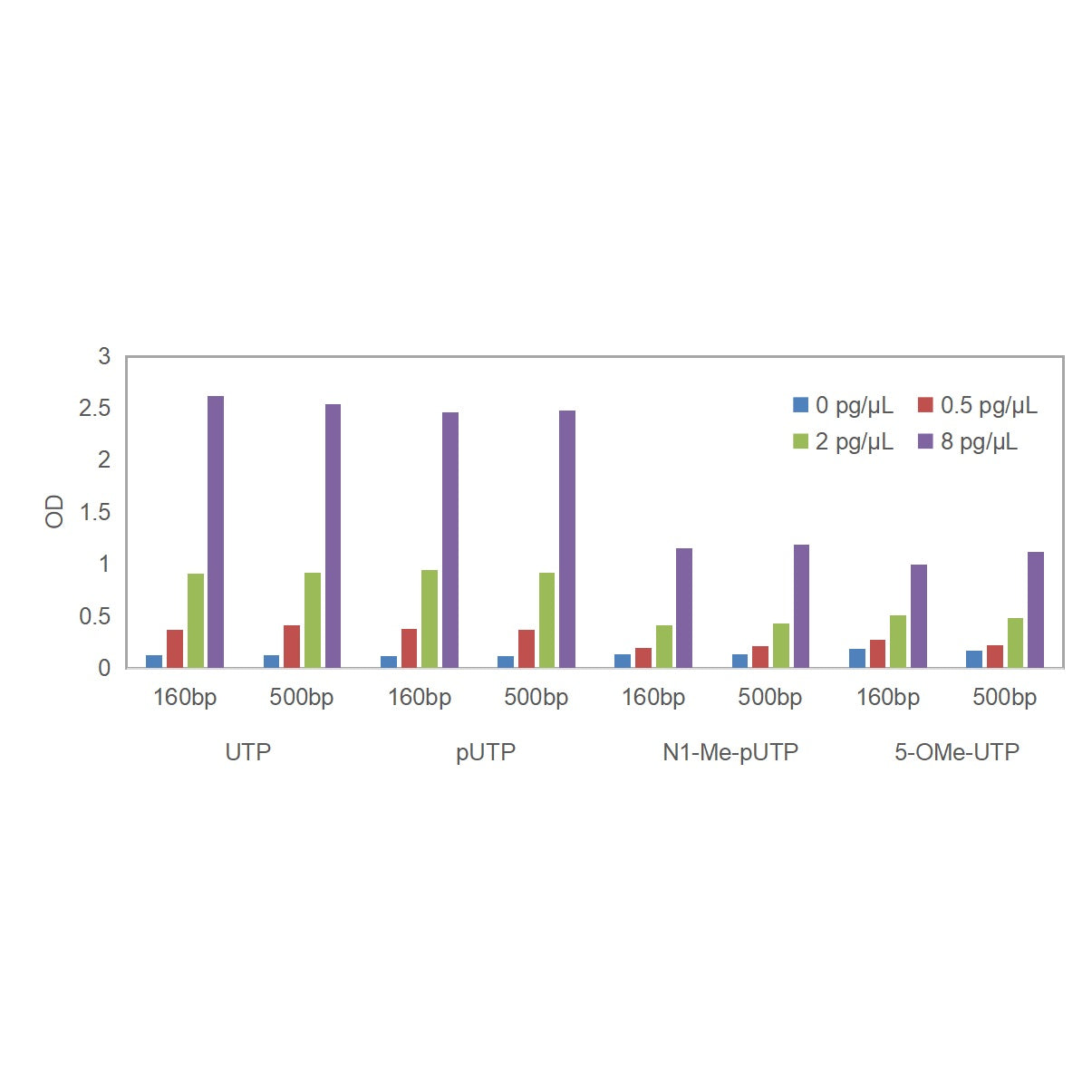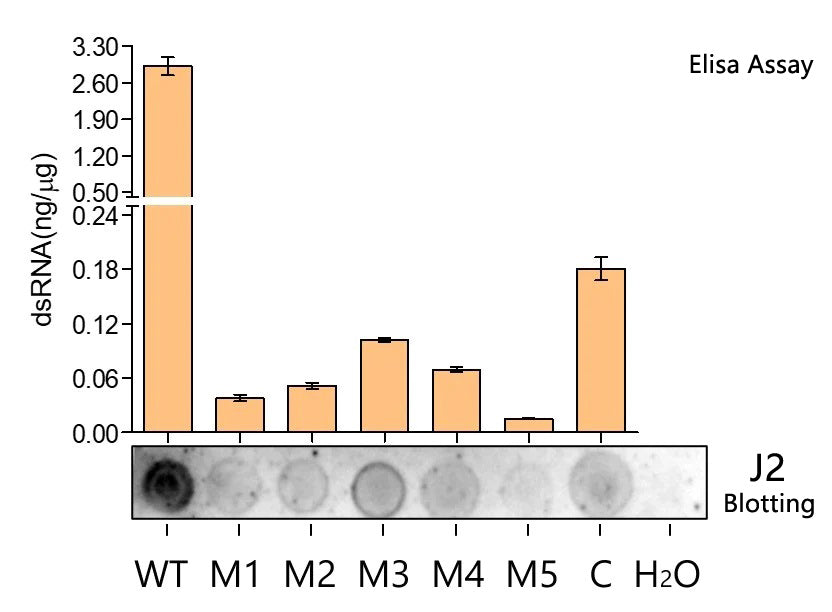Description
Double-stranded RNA (dsRNA) emerges as a by-product during the in vitro transcription of mRNA. This by-product possesses immunogenic properties within the human body, capable of provoking an immune response, consequently diminishing mRNA levels. This renders dsRNA a troublesome process impurity necessitating thorough elimination and stringent control of its residual presence.
To address this concern, the Double-stranded RNA (dsRNA) ELISA detection kit employs the experimental principles of a double-antibody sandwich enzyme-linked immunoassay (ELISA) for the quantification of residual dsRNA. The Kit can not only be used in the detection of regular dsRNAs, but also in detection of peudo UTP, N1-Me-peudo UTP and 5-OMe-UTP modified dsRNAs.
The procedure involves adding both a standard and the test sample onto an enzyme plate (designated as 36717-A) previously coated with anti-dsRNA antibodies. Subsequently, biotin-labeled dsRNA detection antibodies (36717-F) are added in a diluted form. Finally, Streptavidin-HRP (SA-HRP) (36717-G) is introduced to create a complex comprising antibodies, antigens, biotin, and SA-HRP.
Following plate washing, the addition of TMB chromogenic solution (36717-K) initiates color development. Under the influence of HRP enzyme catalysis, TMB undergoes a transformation from colorless to blue, which is then halted through the application of the stop solution (36717-L). Ultimately, this transformation results in a yellow hue, the intensity of which correlates positively with the quantity of dsRNA identified in the sample.
This kit serves a versatile purpose, enabling optimization of the biological product purification process, impurity control during intermediate stages, and release testing for final product assessment.
Components
|
No. |
Name |
36717ES48 |
36717ES96 |
|
36717-A |
Anti-dsRNA coated microtiter strips |
48 T |
96 T |
|
36717-B |
STD 1: unmodified, 5 ng/μL |
7.5 μL |
15 μL |
|
36717-C |
STD 2: pUTP modified, 5 ng/μL |
7.5 μL |
15 μL |
|
36717-D |
STD 3: N1-Me-pUTP modified, 5 ng/μL |
7.5 μL |
15 μL |
|
36717-E |
STD 4: 5-OMe-UTP modified, 5 ng/μL |
7.5 μL |
15 μL |
|
36717-F |
Detection Antibody:Biotin-conjugated Antibodies (100x) |
60 μL |
120 μL |
|
36717-G |
Streptavidin-HRP (100x) |
60 μL |
120 μL |
|
36717-H |
Dilution Buffer 1 |
25 mL |
50 mL |
|
36717-I |
Dilution Buffer 2 |
15 mL |
30 mL |
|
36717-J |
Wash Buffer Concentrate(20×) |
20 mL |
40 mL |
|
36717-K |
TMB Substrate |
6 mL |
12 mL |
|
36717-L |
Stop Solution |
3 mL |
6 mL |
|
36717-M |
Plate Sealer |
2 |
4 |
Product Validation Report
Sensitivity
|
dsRNA Standard |
LOD |
LOQ |
CV(%) |
Recovery (%) |
|
STD1:UTP unmodified |
≤0.001pg/μL |
0.0156 pg/μL |
<10% |
80~120% |
|
STD2:pseudo-UTP modified |
≤0.001pg/μL |
0.0312 pg/μL |
<10% |
80~120% |
|
STD3:N1-Me-pseudo-UTP modified |
≤0.001pg/μL |
0.0156 pg/μL |
<10% |
80~120% |
|
STD4:5-OMe-UTP modified |
≤0.01pg/μL |
0.125 pg/μL |
<10% |
80~120% |
Shipping and Storage
The kit is shipped with an ice pack and can be stored at 2°C ~8°C. Unopened product is valid for one year. Once the reagent is opened, it is valid for half a year. Never freeze this product.
Instructions
1. Preparation before experiment
1) Experimental materials that are not provided in this kit but are required for the experiment:
a. RNase-free tips;
b. RNase-free centrifuge tube;
c. Dust-free paper;
d. RNase-free sample pretreatment plate;
e. Deionized water or double distilled water.
2) Instruments and equipment required but not provided:
a. Multifunctional microplate reader (including dual-wavelength detection mode, covering 450nm and 650nm; capable of using 450nm as the detection wavelength and 650nm as the reference wavelength);
b. Fully automatic plate washer, vortex mixer, constant temperature mixer, centrifuge;
c. Precision micropipettes and multi-channel micropipettes of different specifications;
d. Timer, 4℃ refrigerator;
e. Microplate shaker.
2. Result analysis
a. If the OD value of the sample to be tested exceeds the OD value at the highest point of the standard curve, the sample needs to be diluted and remeasured.
b. Curve Development Procedure: Create a standard curve by plotting the standard concentrations on the x-axis and the corresponding calibrated standard absorbance values on the y-axis. Various drawing and statistical software tools can aid in the generation of standard curves and the determination of unknown sample concentrations. It is advisable to employ a four-parameter or five-parameter fitting method for this experiment. Ultimately, calculate the residual amount of dsRNA in the sample by referring to the standard curve and considering the sample's dilution factor.
c. The provided standard curve is an illustrative example (for reference purposes only). Actual sample content should be determined using a standard curve specifically generated for the same experimental standard.
3. Experiment flow chart

Figure 5 Experiment flow chart
4. Product performance
The performance of this kit has been fully evaluated. For details, please contact technical personnel to obtain the corresponding performance verification report.
5. Notes
- Please read this instruction manual carefully before using this kit.
- Please use this product within the validity period, and it is prohibited to mix related reagents from different batches.
- All reagents need to be returned to room temperature before use.
- For your safety and health, please wear a lab coat and disposable gloves.
-
This product is for scientific research purposes only.
Payment & Security
Your payment information is processed securely. We do not store credit card details nor have access to your credit card information.
Inquiry
You may also like
FAQ
The product is for research purposes only and is not intended for therapeutic or diagnostic use in humans or animals. Products and content are protected by patents, trademarks, and copyrights owned by Yeasen Biotechnology. Trademark symbols indicate the country of origin, not necessarily registration in all regions.
Certain applications may require additional third-party intellectual property rights.
Yeasen is dedicated to ethical science, believing our research should address critical questions while ensuring safety and ethical standards.



